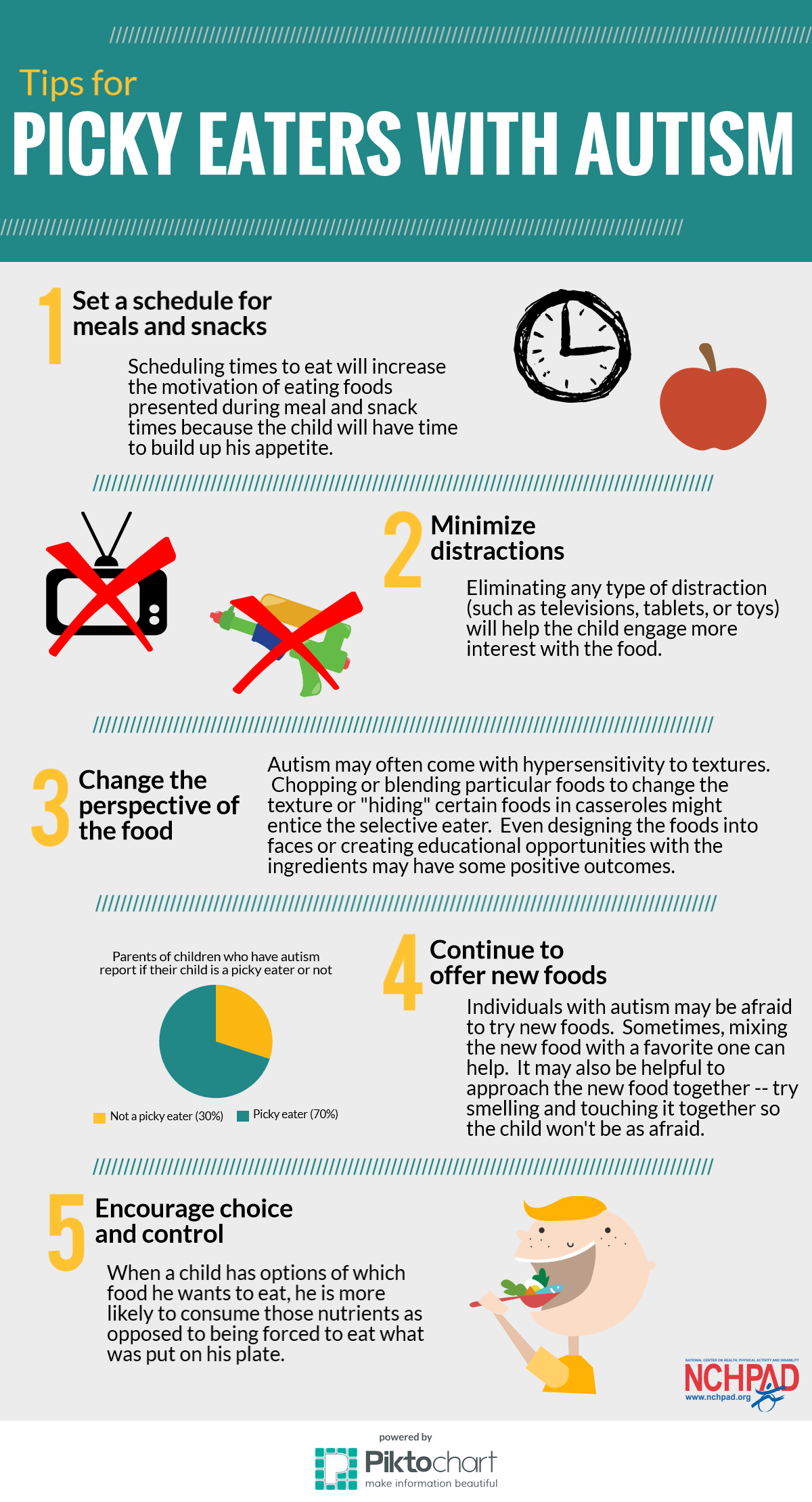By: Rebecca Cline
Autism spectrum disorder (ASD) is a condition of deficits in communication and social interaction, typically with the onset before 3 years old. ASD is the third most common developmental disability in the United States, and it now affects every one in 68 children. Mealtime behaviors and eating problems often occur along with other behavioral and sensory conditions for someone who has been diagnosed with autism. In other words, picky eating is very common with individuals who have an intellectual disability. Creative thinking and patience play large roles when nourishing selective eaters. Use the infographic below for tips when feeding picky eaters who have autism spectrum disorder.
For more information on autism and nutrition, refer to additional NCHPAD resources here:
• http://www.nchpad.org/92/694/Autism~and~Nutrition
• http://www.nchpad.org/840/4262/Can~Diet~Improve~the~Symptoms~of~Autism~
Resources:
Mahan, L. K., Escott-Stump, S., Raymond, J. L., & Krause, M. V. (2012). Krause's food & the nutrition care process (13th ed.). St. Louis, Mo.: Elsevier/Saunders.
Brown, J. (2011). Nutrition though the life cycle (4th ed.). Belmont, CA.: Wadsworth Cengage Learning.

